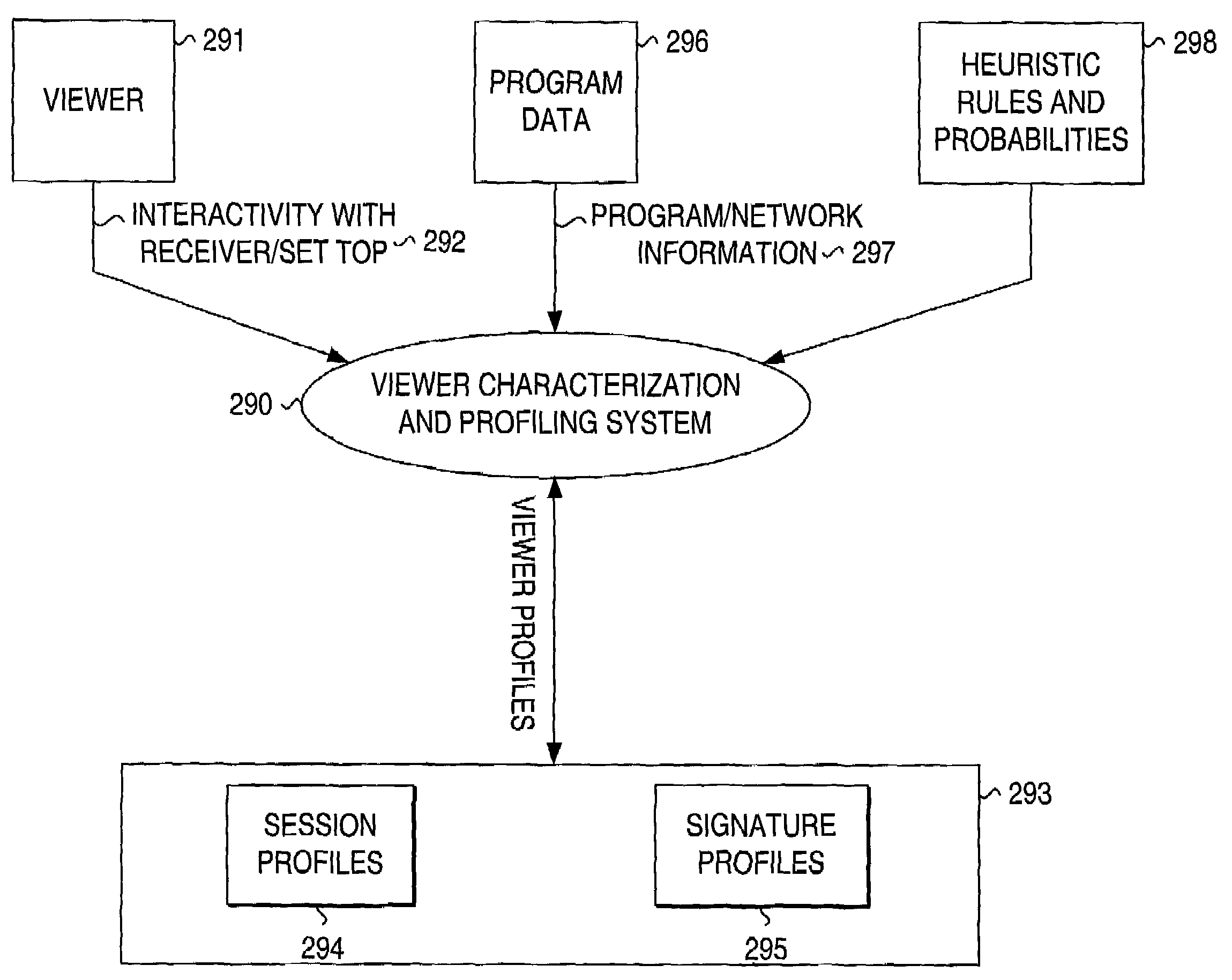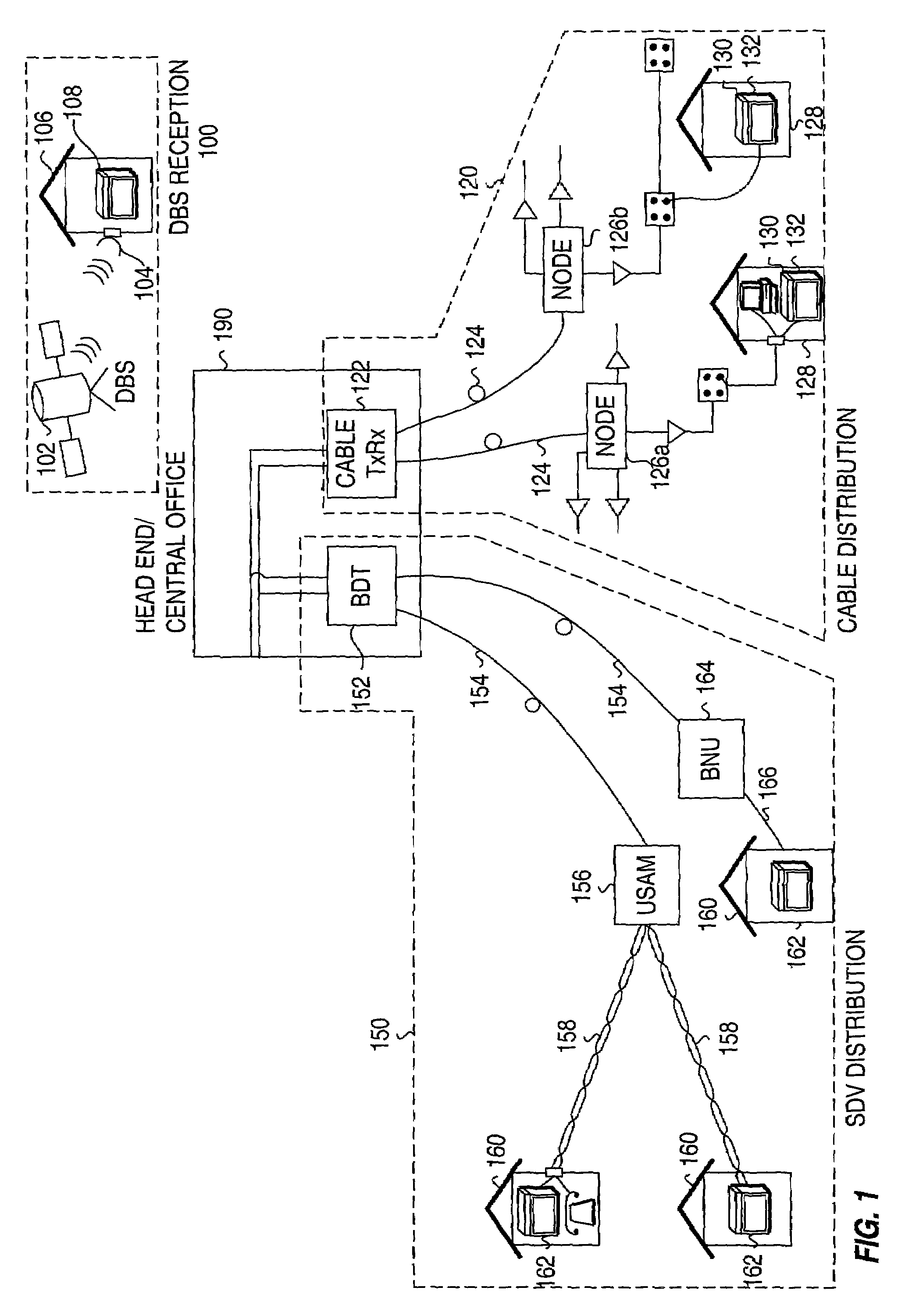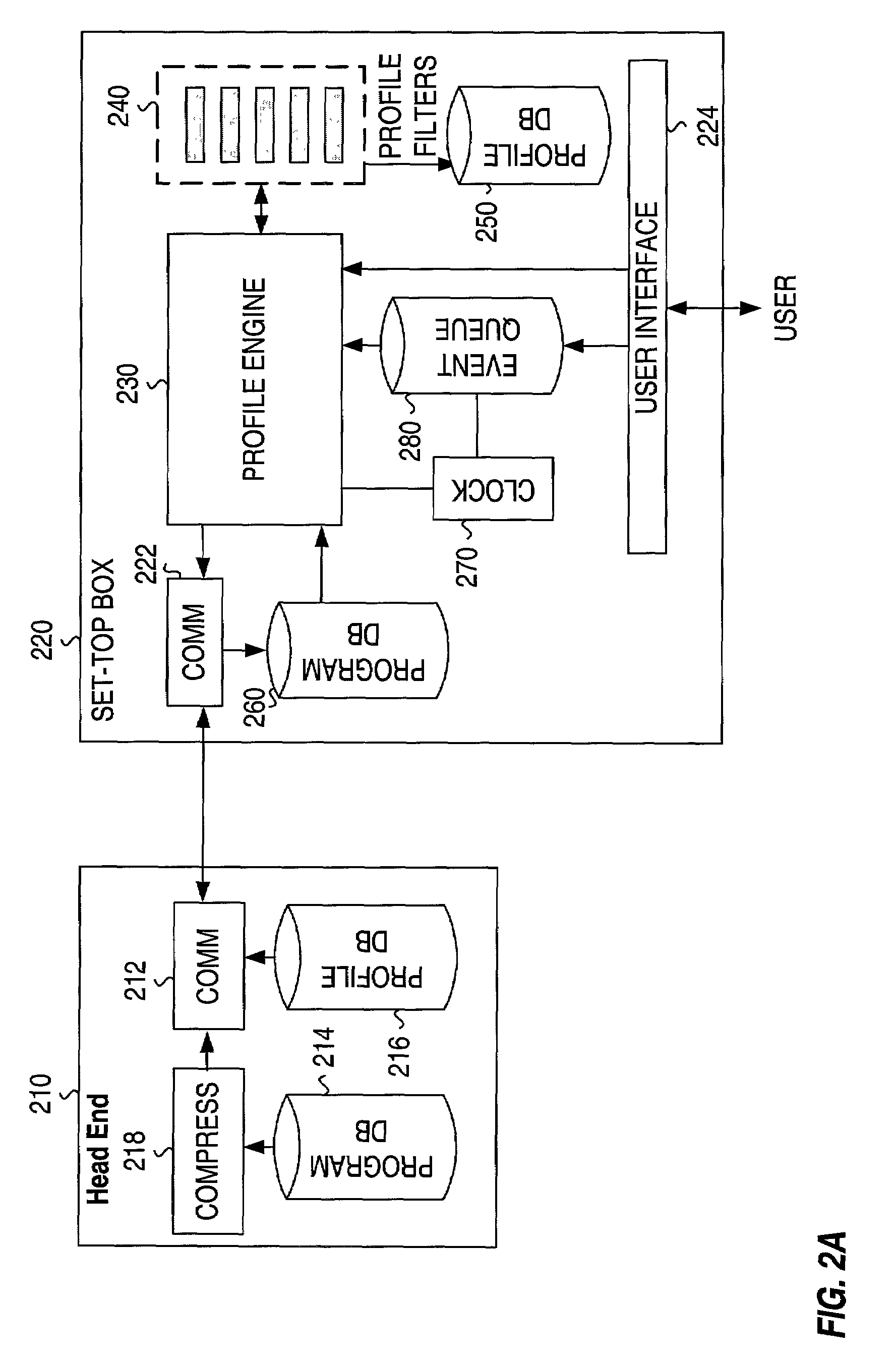Profiling and identification of television viewers
a technology for applied in the field of identifying and presenting television programs, can solve the problems of not even being seen/heard by subscribers, inability to quickly and precisely deliver programming and advertising, and ineffective advertising,
- Summary
- Abstract
- Description
- Claims
- Application Information
AI Technical Summary
Benefits of technology
Problems solved by technology
Method used
Image
Examples
Embodiment Construction
[0118]In describing a preferred embodiment of the invention illustrated in the drawings, specific terminology will be used for the sake of clarity. However, the invention is not intended to be limited to the specific terms so selected, and it is to be understood that each specific term includes all technical equivalents which operate in a similar manner to accomplish a similar purpose.
[0119]With reference to the drawings, in general, and FIGS. 1 through 35 in particular, the method and apparatus of the present invention is disclosed.
[0120]The present invention can be implemented for use with various television (TV) delivery systems including, but not limited to, digital broadcast satellite (DBS) systems, switched digital video (SDV) systems, local multipoint distribution systems (LMDS), multichannel multipoint distribution systems (MMDS), hybrid fiber coax (ARC) systems, the Internet, other cable TV (CTV) systems, or other terrestrial wireless networks. The TV delivery system can de...
PUM
 Login to View More
Login to View More Abstract
Description
Claims
Application Information
 Login to View More
Login to View More - R&D
- Intellectual Property
- Life Sciences
- Materials
- Tech Scout
- Unparalleled Data Quality
- Higher Quality Content
- 60% Fewer Hallucinations
Browse by: Latest US Patents, China's latest patents, Technical Efficacy Thesaurus, Application Domain, Technology Topic, Popular Technical Reports.
© 2025 PatSnap. All rights reserved.Legal|Privacy policy|Modern Slavery Act Transparency Statement|Sitemap|About US| Contact US: help@patsnap.com



